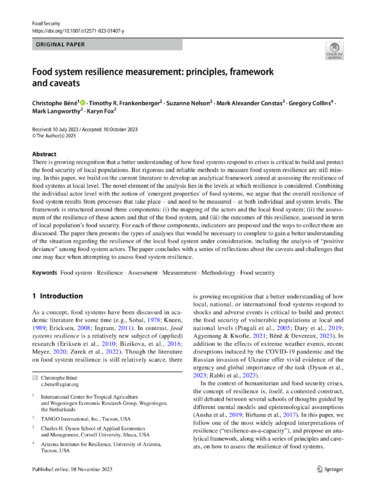Food system resilience measurement: principles, framework and caveats
There is growing recognition that a better understanding of how food systems respond to crises is critical to build and protect the food security of local populations. But rigorous and reliable methods to measure food system resilience are still missing. In this paper, we build on the current literature to develop an analytical framework aimed at assessing the resilience of food systems at local level. The novel element of the analysis lies in the levels at which resilience is considered. Combining the individual actor level with the notion of 'emergent properties' of food systems, we argue that the overall resilience of food system results from processes that take place – and need to be measured – at both individual and system levels. The framework is structured around three components: (i) the mapping of the actors and the local food system; (ii) the assessment of the resilience of these actors and that of the food system, and (iii) the outcomes of this resilience, assessed in term of local population’s food security. For each of those components, indicators are proposed and the ways to collect them are discussed. The paper then presents the types of analyses that would be necessary to complete to gain a better understanding of the situation regarding the resilience of the local food system under consideration, including the analysis of “positive deviance” among food system actors. The paper concludes with a series of reflections about the caveats and challenges that one may face when attempting to assess food system resilience.

